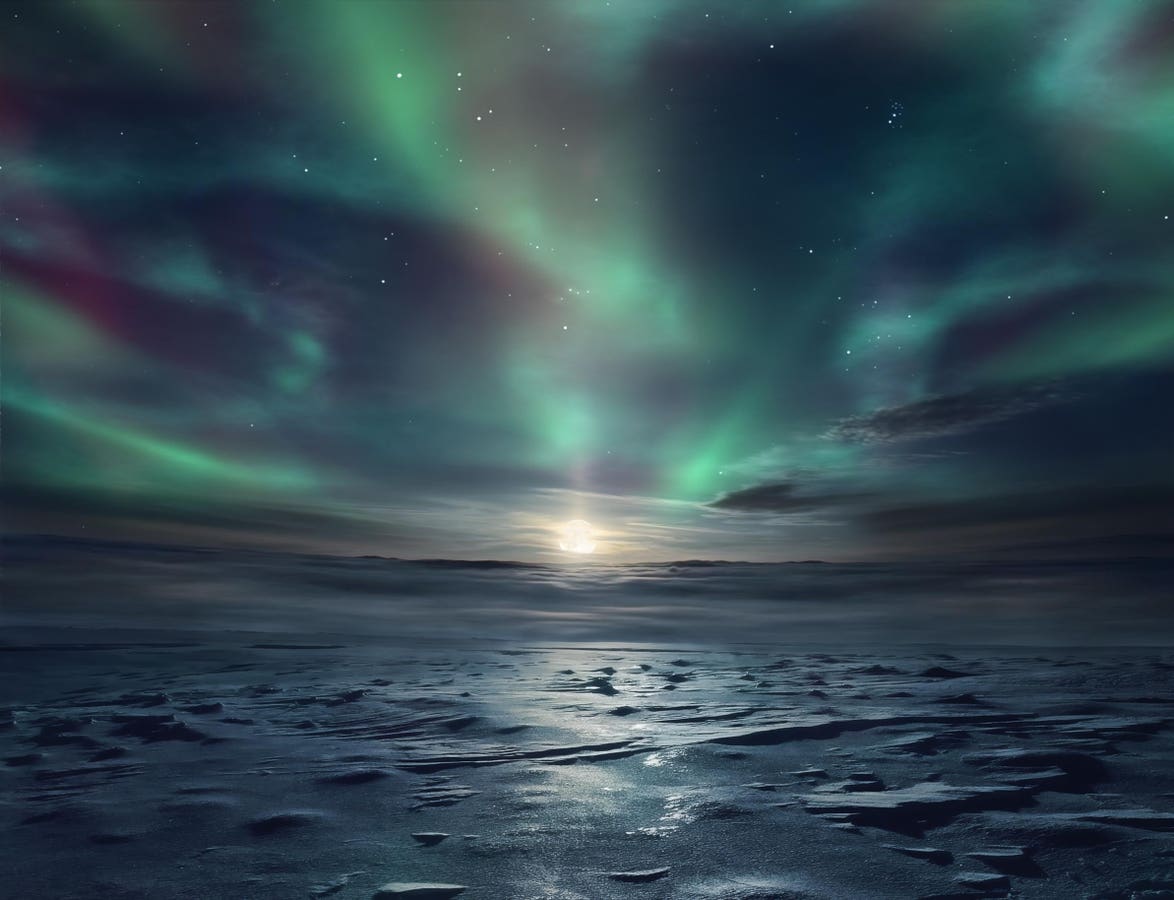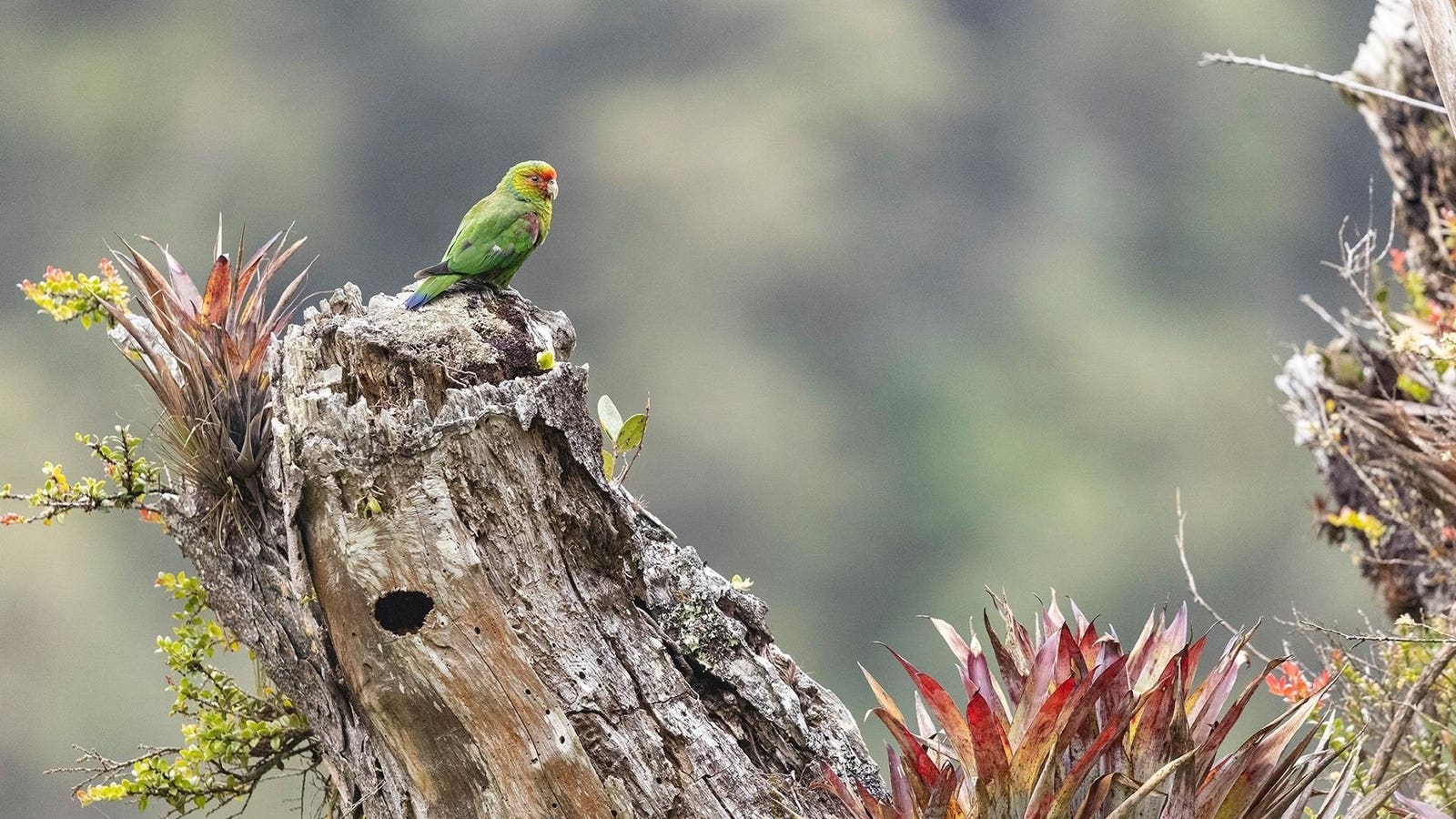Artist’s impression of “Snowball Earth.” The Snowball Earth hypothesis suggests that, hundreds of … More
During the Cryogenian period about 700 to 635 million years ago, Earth experienced a super ice age, one that froze the entire planet from the poles to the equator. Scientist have long wondered how life survived this “Snowball Earth.” Most of the surface was covered by ice, so there was no to little sunlight reaching the oceans, and with no weathering happening on the frozen-solid continents, no nutrients were washed into the sea. Maybe hot springs deep beneath the ice provided a last viable spot where life persisted until the ice receded.
In a new study, researchers at MIT’s Department of Earth, Atmospheric and Planetary Sciences, the Natural History Museum in London and the University of Waikato in New Zealand, propose an alternative scenario.
“We’re interested in understanding the foundations of complex life on Earth. We see evidence for eukaryotes before and after the Cryogenian in the fossil record, but we largely lack direct evidence of where they may have lived during,” says lead author Fatima Husain, a graduate student in MIT. “The great part of this mystery is, we know life survived. We’re just trying to understand how and where.”
The scientists found that lifeforms could have survived the global freeze by thriving in watery oases on the surface.
Similar environmental conditions still exist today in cryoconite holes. Dark-colored dust and debris transported by glaciers to the surface absorb sunlight, heating up and melting into the ice forming small pockets and holes. At temperatures hovering around 0 degrees Celsius, the resulting meltwater ponds could have served as habitable environments for early life.
Cryoconite hole on a glacier
The researchers analyzed samples from a variety of cryoconite holes and meltwater ponds located on the McMurdo Ice Shelf in an area that was first described by members of Robert Falcon Scott’s 1903 expedition as “dirty ice.” They discovered clear signatures of life in every pond. Even more surprising, the communities varied from pond to pond, revealing a high diversity of life forms.
There were cyanobacteria, prokaryotic, single-celled photosynthetic organisms that lack a cell nucleus or other organelles. The oldest cyanobacteria-like fossils appear on Earth over 3 billion years ago. While these ancient microbes are known to survive within some of the the harshest environments on Earth, the researchers wanted to know whether eukaryotes — complex organisms that evolved a cell nucleus and other membrane bound organelles — could also weather similarly challenging circumstances. Chemical analysis showed the presence of various molecules clearly associated with eukaryotic life.
The team found that salinity plays a key role in the kind of life a pond can host: Ponds that were more brackish or salty had more similar communities, which differed from those in ponds with fresher waters. The dust and debris accumulating in the holes slowly decay, providing much-needed minerals including salt, and sunlight powers the cyanobacteria and other photosynthetic organisms living in microbial mats covering the icy walls of the tiny ecosystems.
“No two ponds were alike,” Husain explains. “There are repeating casts of characters, but they’re present in different abundances. And we found diverse assemblages of eukaryotes from all the major groups in all the ponds studied. These eukaryotes are the descendants of the eukaryotes that survived the Snowball Earth. This really highlights that meltwater ponds during Snowball Earth could have served as above-ice oases that nurtured the eukaryotic life that enabled the diversification and proliferation of complex life — including us — later on.”
At the end of the Cryogenian, when the ice melted and the frozen continents thawed, a surplus of nutrient-rich meltwater flooded the oceans. The surviving eukaryotic microbes experienced a boost in their evolution, leading to the emergence of complex multicellular organisms in the next 100 million years.
Additional material and interviews provided by MIT News.









